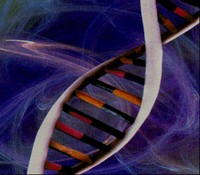26.11.2008
in HAIR LOSS SCIENCE

(NaturalNews) Saw palmetto may be a man’s best friend. It’s the primary herb helping men maintain prostate health that’s very popular throughout Europe for its ability to relieve symptoms associated with benign prostatic hyperplasia (BPH), otherwise known as enlargement of the prostate. In the U.S. where pharmaceuticals are the standard of care for prostate problems, saw palmetto is gaining popularity following several recent studies showing it provides relief from short-term urinary symptoms and other symptoms of BPH, as well as relief from inflammation of the prostate and cell proliferation. It also promotes hair growth in men with thinning hair or baldness. It provides these benefits safely, naturally and with no noted side effects.

CLICK ON
http://www.thewestminsterpractice.com/hair_stimulants.asp
Saw palmetto, botanically known as Serenoa repens or as sabal palm in Europe, is a magnificent palm tree that grows naturally in Florida, Georgia and Mississippi. The therapeutic compound comes from the berries of the plant. Historical use of the herb can be traced in the Americas to the Mayans who used it as a tonic and to the Seminoles who took it as an expectorant and antiseptic.
Saw Palmetto prevents conversion of testosterone to DHT
The herb possesses several mechanisms of action, with the primary action relating to prostate health being its ability to inhibit the 5-alpha reductase enzyme which converts testosterone, the male sex hormone, to a more potent metabolite, dihydrotestosterone (DHT). In addition, it blocks receptor sites on cell membranes required for cells to absorb DHT. An excess of DHT is believed one of the primary causes of prostate problems as well as the cause of male baldness.
Recent research documents the health benefits of saw palmetto
In a study reported in the Journal of Urology, men with BPH obtained significant short-term symptom relief with saw palmetto. Ninety-two men between the ages of 49 and 75 with lower urinary tract symptoms were divided into two groups, one treated with two soft gels of saw palmetto, and the other treated with a placebo. Both groups were treated for a twelve week period. Maximum urinary flow was significantly higher in the treatment group compared to the placebo group, and urinary resistance was significantly lower. Yet mean prostate volume was comparable in the two groups.
The American Family Physician journal reported a diagnosic and management review of BHP. They found that through its ability to inhibit 5-alpha reductase, saw palmetto as well as rye grass pollen extract, and pygeum relieved symptoms such as urinary hesitancy, weak stream, nocturia, incontinence, and recurrent urinary tract infections.
A review of literature published in Archivio Italiano di Andrologia found that saw palmetto, lycopene and selenium, the three most widely used compounds in treatment of the prostate, have a common feature which may be a dual activity on proliferative disorders as well as on inflammatory conditions at the level of the prostate gland.
A study reported in Anticancer Research investigated the effect of an extract of saw palmetto on hormone sensitive and insensitive prostate and breast cancer cells, and urinary bladder, colon and lung cancer cells in order to assess its growth inhibitory abilities. They found that saw palmetto extract induced a dose-dependent anti-proliferative effect on all the human malignant cells tested.
Saw Palmetto reduces male pattern hair loss
Male hair loss can often be attributed to the conversion of testosterone to DHT promoted by the 5-alpha reductase enzyme. DHT causes hair thinning by shrinking the follicles in the scalp, which results over a period of time in the follicles being far too small for hair to grow, resulting in baldness.
The link between DHT and hair loss has been well established, with numerous clinical studies and surveys concluding that this hormone can be directly linked as a cause of as many as 95% of all cases of hair loss. The studies have shown that this condition is genetically linked, with excessive production of DHT being passed from generation to generation. It is this condition that is targeted by pharmaceutical products such as propecia (finasteride), and rogaine (minoxidil).



CLICK ON
http://www.thewestminsterpractice.com/medical_breakthrough.asp
While the testosterone to DHT conversion creates hair loss on the head, it also promotes the growth of hair in places where it is not wanted. By preventing this hormonal conversion, saw palmetto is showing in research to be effective in the treatment of male hair loss. It is able to get the hair off men’s backs and back on their heads. Some studies have shown it to be as effective as Propecia and Rogaine. This aspect of saw palmetto was discovered by people using it for prostate issues who started reporting the regrowth of hair on their heads.
Shampoos and lotions containing saw palmetto are available at health food stores and on line. Saw Palmetto is available as a supplement. The dosage amount for men is 300 to 500 mg. per day. Saw palmetto has been shown in research to be non-toxic and safe for extended use.
Saw Palmetto is not the only herb able to influence prostate health
Several other herbs and plant compounds are potentially useful in maintaining prostate health, including pygeum, nettle, beta sitosterol, and carotenoids such as lycopene. Health of the prostate gland is heavily influenced by the overall health of the body. It’s hard to find a sick prostate gland in a body otherwise possessing excellent health. Following the basics for general health will go along way in promoting prostate health.
Pygeum is an African plum tree found in tropical Africa. An extract from the bark of pygeum has been used in Europe as a prevention and treatment of prostate disorders including BPH. More recently in the U.S. pygeum has been marketed along side saw palmetto for prostate health and cancer prevention and treatment.
An interesting study reported in Endocrine tested the anti-cancer potential of pygeum in vitro and in vivo. In tissue culture, pygeum extract inhibited the growth of cancerous cells, induced appropriate programmed cell death and altered cell kinetics, down regulated ER-alpha and PKC-alpha protein, and demonstrated the ability to bind with estrogen and androgen receptors. Mice fed with pygeum showed a significant reduction in prostate cancer incidence of 35% compared to controls. Researchers concluded pygeum is a useful supplement for men at high risk of developing prostate cancer.
Do you have Hair Loss Problems, read our Hair Loss Help
Source:
“Saw Palmetto”, Mayo Clinic Tools for Healthier Lives.
“Saw Palmetto Can Prevent Hair Loss?” All About Your Body and Spirit.
http://www.naturalnews.com/024917.html














